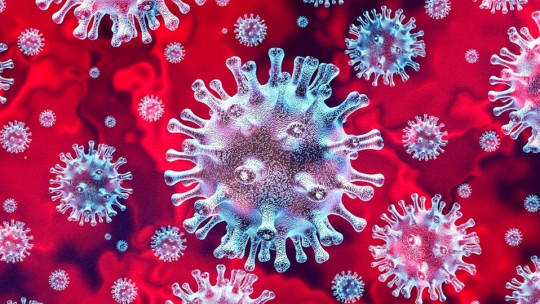
We have all experienced at some point the feeling of sharing the same emotion as the people around us.
Let’s try to better understand why this is this psychological mechanism known as emotional contagion, what is its evolutionary usefulness and how it affects us in our daily lives. We will also explore some of the experiments that have been done in this regard to understand this phenomenon.
What is emotional contagion?
Emotional contagion is a psychological quality by which Individuals tend to share the same emotions that the people around us are experiencing This phenomenon is not only limited to the emotions themselves, but also to the behaviors derived from them, so we could also observe how certain behaviors also spread easily between people.
Furthermore, emotional contagion is a mechanism that, although it stands out especially in humans, is not limited exclusively to this species. Some tests have shown that in other animals, such as some types of primates, but also others much more genetically distant from us, such as dogs, they can sometimes use emotional contagion as a means of transmitting emotions.
This phenomenon has a crucial importance for our social relationships, since It is an automatic method of tuning into other people’s feelings It is important to keep in mind that emotional contagion can occur both consciously and unconsciously. Therefore, we can experience this attunement in emotions by mere observation of another person, but it is not the only way.
It is also possible to experience this attunement in a more conscious way, in which the other individual exposes what he feels to try to transmit it to his neighbor, who collects it and integrates it as his own emotion as a result of this mechanism, thus favoring emotional contagion. managed.
History of the concept of emotional contagion
Emotional contagion is a concept first proposed in 1993, following a study carried out by Elaine Hatfield and her colleagues John Cacioppo and Richard Rapson This group of psychologists used this expression to refer to an observed psychological phenomenon that consisted of the human tendency to synchronize behaviors with the person with whom they are communicating.
In this sense, they found that the people studied seemed to adopt a body posture similar to that of their interlocutor, used a similar tone of voice and even adjusted their expressions to those of their neighbor. But the most important thing is that all of this led to a harmony in the emotions of both, which led them to use the expression of emotional contagion.
These authors tried to explain this phenomenon through a two-phase sequence. At first, it seems that synchronization has more to do with the behavioral part. For example, a person can make a certain gesture, such as smiling, and the most immediate effect on the interlocutor will be to replicate that behavior.
But After this first behavioral comparison, emotional convergence arrives, since our own behavior, in this case non-verbal language, would also be guiding the emotion. It has been proven that the act of performing gestures associated with a certain emotional state predisposes us to experience that state. For example, smiling makes it easier for us to feel happy.
Therefore, it seems that one of the bases of emotional contagion is precisely that previous behavioral contagion that seems to trigger the reaction of our feelings once we have brought our behavior into line with that of the other person who is communicating with us.
Differences between emotional contagion and empathy
Surely the reader will have already anticipated that emotional contagion seems to have a great similarity with the concept of empathy, which also implies a synchronicity in feelings between people. Indeed, they have similar qualities in many aspects, but in reality they are two different phenomena.
In order to distinguish them, we must resort to the characteristic of the autonomy of the emotion Autonomy is a condition that occurs in empathy, but not in emotional contagion. This quality would refer to the ability of the person who is experiencing this phenomenon to distinguish their own experience of the emotion and that of the other person.
Therefore, when we experience empathy, what we are doing is putting ourselves in the other person’s shoes, knowing the extent of their emotions and therefore being aware of what is happening inside them. On the contrary, emotional contagion is an automatic process in which, as we have already seen, an automatic synchronization occurs in us with the behavior and emotions of another individual.
Facebook experiment
In 2012, the social network Facebook carried out a rather controversial experiment, in which the effect of emotional contagion came to light. What they did was manipulate in a very subtle way the publications that several hundred thousand of their users saw on their walls. The objective was that a part of these users would be exposed to a specific type of content, while the other group would see the opposite
Where did they make the difference? In the emotional tone of said publications. Therefore, they manipulated the algorithm so that half of this group of users was more exposed to the posts they usually saw, but only positive ones, omitting the negative ones. With the other half, the opposite was done, favoring the viewing of emotionally negative publications and trying to avoid those that were more positive.
What did Facebook want to test with this experiment? Basically, that Emotional contagion exists and not only works in person, but the phenomenon is just as powerful when it occurs digitally They verified that their hypothesis was correct by analyzing the publications that these users made after being subjected to biased viewing, without them knowing it.
In this way, people who saw positive content showed a greater tendency to make publications along the same lines, while with the other group what was expected happened. Those who were exposed to emotionally negative content, through a process of emotional contagion, in this case digital, subsequently published content with an equally negative tint.
The controversy arose from knowing that, in some way, Facebook was trying to deliberately manipulate the emotional state of some users and also their behaviors, since it was shown that they created one or other publications depending on the direction in which they were directed. would have pushed, without them knowing.
Of course, not informing users that they were taking part in a study was also blatantly unethical. Although the company hid behind the fact that by accepting the rules prior to creating the account, all people had to be aware that this type of study could be carried out, the truth is that they should have informed them explicitly, asking consent to all participants.
Likewise, this experiment raised many concerns regarding the danger that companies as powerful and with so many users as Facebook could take advantage of emotional contagion to modify people’s thoughts and even obtain commercial and even political benefit from it.
Meta-analysis with rodents
We already anticipated at the beginning that human beings are not the only animals that use emotional contagion. Below we will analyze a meta-analysis that was carried out in 2020 to find out this effect in different studies with rats and mice, to know the similarities and differences between both species in that sense.
The main conclusions reached by this meta-analysis were, firstly, that both mice and rats were capable of demonstrating the use of emotional contagion, at a similar level. It was also found that this effect It took place whether the other individual was known to the subject or whether it was the first time he or she interacted with him or her
One of the main differences found came from the variable of previous experience. In the case of rats, if they had previously experienced the sensation of fear due to a certain stimulus, they were more likely to show emotional contagion or to do so with greater intensity. However, this effect was not found in the mouse samples.
The last of the major conclusions of this meta-analysis had to do with the social proof factor When this variable was involved, different levels of emotional contagion were found in both mice and rats.








